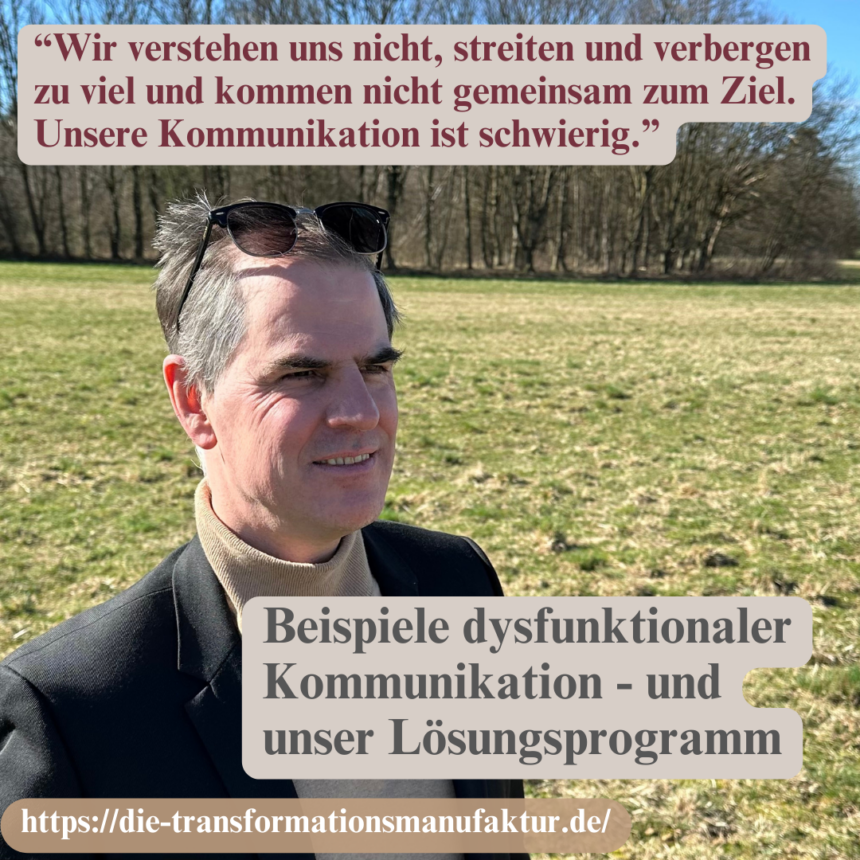We all know examples of dysfunctional communication in teams. And yet we suffer from it time and time again. We think: “We don’t have to love each other. Just communicating well, openly and appreciatively would be nice …”.
We observe the following in teams, for example:
▶️ Lack of clarity: messages are not sufficiently clear to the recipient in terms of content, meaning or emotion
▶️ Messages are not received: team members are mentally in “their world” and filter out inappropriate messages
▶️ Destructive dominance: One employee or manager dominates the discussion as the “alpha”, essential views of “the whole” are lost
▶️ Substitute discussions: Behind seemingly rational arguments at the content level lie unspoken emotions (anger, frustration, disappointment, fear)
▶️ Weak decision-making: Teams prefer to “talk around” necessary decisions or “rehash” decisions that have been made. There are many reasons for this – fear of responsibility, anger, frustration over something experienced, etc.
▶️Ganz generally ego-related mindsets: A closed, self-centered mindset can lead to personal aggression on the part of individuals, to employees withdrawing into an observer role or to particular interests being pursued and information being withheld.
Finding a solution to these problems is not difficult. It simply means that managers and teams should get to know and apply more than just the much-cited and important “active listening”. Systematically improving communication leads to much more cohesion, fun, energy and ultimately success in the team.
In another post, we look at 6 key points of our comprehensive team coaching program “The Art of Thinking Together”. Based on the work and research of William Isaac. Our suggestion for you.

